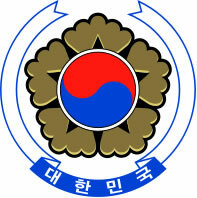After World War II, and the beginning of the Cold War, in the year 1948, the territory of Korea was divided into two parts. This division was based on the passage of the 38° north parallel. A country to the north of this parallel, called North Korea, was created, under the influence of the socialist regime of the former Soviet Union; and another country on the south side of that same parallel, called South Korea, under the influence of US capitalism.
Only on August 15, 1948, was created the Republic of Korea (official name), with capital in Seoul and under US political influence.
After several years of conflicts between the two Koreas, it was only in the late 1990s that there was a process of political-economic rapprochement between the two nations.
South Korea is a country in Southeast Asia, has mountainous terrain, bathed by the Pacific Ocean, located in the southern portion of the Korean Peninsula. The toponym Korea derives from Koryo, "tall and beautiful", name of the dynasty that ruled the country from 918 BC. Ç. until 1392 d. Ç.
Due to its accelerated industrial and economic development during the 1970s, it formed, together with Singapore, Hong Kong and Taiwan, the “Asian Tigers”. Its Gross Domestic Product (GDP) grew, on average, 9.1% per year between 1980 and 1993, one of the highest rates in the world.
Four large chaebols control the Korean economy and have a strong presence in the international market: Hyunday, Daewoo, Samsung and Lucky Gold Star.

Coat of arms of South Korea
South Korea data:
Territorial extension: 99,016 km².
Location: Asia.
Capital: Seoul.
Climate: Temperate continental.
Government: Republic with mixed form of government.
President: Lee Myung-bak.
Administrative division: 9 provinces and 6 special cities.
Language: Korean.
Religion: Christianity 40.8% (Catholics 18.9%, Independents 16.4%, Others 10.8%, Dual Affiliation 5.3%), Beliefs traditional 15.6%, Buddhism 15.3%, new religions 15.2%, Confucianism 11.1%, no religion and atheism 1.6%, other 0,5%.
Population: 48,332,820 inhabitants. (Men: 23,931,788; Women: 24,401,032).
Ethnic Composition: Korean 99.9%, Chinese 0.1%.
Demographic density: 481 inhab/km².
Average annual population growth rate: 0.46%.
Population residing in urban areas: 81.71%.
Population residing in rural areas: 18.29%.
Undernourished population: 4.5%.
Life expectancy at birth: 78.2 years.
Human Development Index (HDI): 0.877 (very high).
Currency: Won.
Gross Domestic Product (GDP): US$956,788 million.
GDP per capita: 19,841 US$.
External relations: Apec, World Bank, IMF, WTO, UN, OECD.
By Wagner de Cerqueira and Francisco
Graduated in Geography
Brazil School Team
Countries of the world - geography - Brazil School

